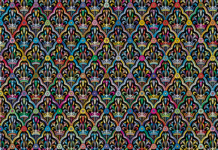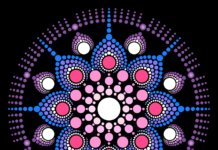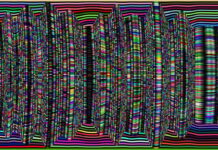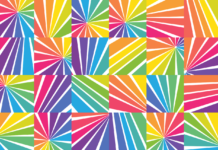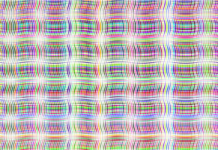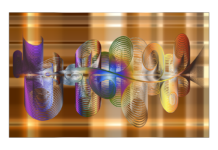A web banner is a form of online advertising that appears on websites to promote a product, service, or brand. It is a graphical element typically displayed at the top, bottom, or sides of a webpage. Web banners are designed to attract the attention of website visitors and encourage them to click on the banner, leading them to the advertiser’s website or landing page.
Web banners come in various sizes and formats, including static images, animated GIFs, HTML5 animations, and even videos. The purpose of a web banner is to generate brand awareness, increase website traffic, and ultimately drive conversions or sales. With their visual appeal and strategic placement, web banners play a crucial role in digital marketing campaigns.
The first two paragraphs of this response contain three instances of the term “web banner.” Web banners are a popular advertising tool because they allow businesses to target specific audiences and reach a wide range of potential customers. These banners often feature eye-catching graphics, compelling copy, and a clear call-to-action, all of which aim to entice users to engage with the advertisement.
Web banners are typically placed on high-traffic websites that align with the advertiser’s target audience. The placement can be negotiated directly with website owners or through advertising networks that manage the distribution of banners across multiple websites. When a user clicks on a web banner, they are redirected to the advertiser’s website or landing page, where they can learn more about the promoted product or service.
The design of web banners is a critical aspect of their effectiveness. A well-designed banner should grab the viewer’s attention, communicate a clear message, and create a desire to take action. The visual elements, such as images, colors, and typography, should be consistent with the advertiser’s branding to reinforce brand recognition and recall.
Static web banners are the simplest form, consisting of a single image or graphic that does not move or change. They are often used when the main objective is to convey a specific message or showcase a product. These banners can be created using graphic design software and saved in common image formats such as JPEG or PNG. Static web banners are widely supported by web browsers and can be easily displayed on various devices.
Animated web banners, on the other hand, add motion and interactivity to the advertising experience. These banners can be created using software that supports animation, such as Adobe Animate or Google Web Designer. Animated web banners are typically saved as GIF files or HTML5 animations. They can include multiple frames or scenes that change over time, creating an engaging visual experience for the viewer.
HTML5 web banners have gained popularity due to their versatility and compatibility with different devices and platforms. Unlike static or GIF-based banners, HTML5 banners are built using HTML, CSS, and JavaScript, allowing for more complex animations, interactivity, and responsive design. With HTML5 banners, advertisers can create interactive elements, such as forms, games, or videos, directly within the banner itself.
Video web banners have emerged as a dynamic and attention-grabbing format. These banners incorporate video content, usually autoplaying or triggered by user interaction, to deliver a compelling message. Video banners can be highly effective in capturing the viewer’s attention and conveying a story or showcasing a product in action. They are often used for brand awareness campaigns or to introduce new products and services.
Web banners are often part of broader advertising campaigns that include various channels, such as social media, search engine marketing, or email marketing. They can be targeted based on demographics, interests, or browsing behavior, allowing advertisers to reach specific segments of their target audience. This targeted approach helps maximize the effectiveness of web banners by presenting them to users who are more likely to be interested in the advertised product or service.
Measuring the success of web banners is essential to evaluate their performance and optimize future campaigns. Advertisers use various metrics to measure the effectiveness of web banners. These metrics include click-through rate (CTR), which indicates the percentage of users who clicked on the banner compared to the total number of impressions. A higher CTR typically suggests that the banner has successfully attracted the attention of users.
Conversion rate is another crucial metric that measures the percentage of users who took a desired action, such as making a purchase or filling out a form, after clicking on the web banner. Conversion tracking tools and analytics platforms help advertisers track these actions and calculate conversion rates accurately.
Engagement metrics, such as time spent on the landing page or the number of pages visited, provide insights into the level of interest and involvement generated by the web banner. These metrics help advertisers understand if users are interacting with their website or quickly bouncing back, allowing them to refine their messaging and design to improve engagement.
Apart from quantitative metrics, qualitative feedback from users can also provide valuable insights. Advertisers may gather feedback through surveys, focus groups, or social media listening to understand how users perceive their web banners and whether they resonate with the target audience.
To maximize the effectiveness of web banners, advertisers employ various strategies and best practices. Firstly, it is essential to clearly define the objective of the web banner campaign and align it with the overall marketing goals. This ensures that the banner’s design, messaging, and call-to-action are in line with the desired outcome.
Secondly, understanding the target audience is crucial for creating relevant and compelling web banners. Conducting market research, analyzing customer data, and identifying user preferences and behaviors can help tailor the banners to specific segments. By delivering personalized messages, advertisers can increase the chances of capturing the attention and interest of their intended audience.
Thirdly, effective copywriting plays a significant role in web banner design. The text on the banner should be concise, persuasive, and directly communicate the value proposition or key message. Using strong action verbs, clear benefits, and a sense of urgency can help encourage users to click on the banner and take the desired action.
Moreover, designing visually appealing banners is essential for capturing users’ attention. Using high-quality images or illustrations, contrasting colors, and eye-catching fonts can help make the banner stand out on the webpage. However, it is crucial to strike a balance between creativity and simplicity, ensuring that the banner is visually appealing without being overwhelming or distracting.
Another important consideration is the placement of web banners. Advertisers should identify websites or platforms that attract their target audience and negotiate ad placements accordingly. The banner’s position on the webpage, such as above the fold or alongside relevant content, can significantly impact its visibility and click-through rates.
Additionally, optimizing the loading speed of web banners is crucial in today’s fast-paced digital landscape. Slow-loading banners can lead to user frustration and abandonment. Advertisers should optimize file sizes, compress images, and utilize efficient coding techniques to ensure that banners load quickly on various devices and internet connections.
In conclusion, web banners are an integral part of online advertising and play a crucial role in driving brand awareness, website traffic, and conversions. By employing effective design, targeted messaging, and strategic placement, advertisers can create engaging and compelling banners that capture users’ attention and drive desired actions. Continual monitoring and optimization based on performance metrics and user feedback are essential for maximizing the effectiveness of web banners and achieving marketing objectives in the digital realm.





